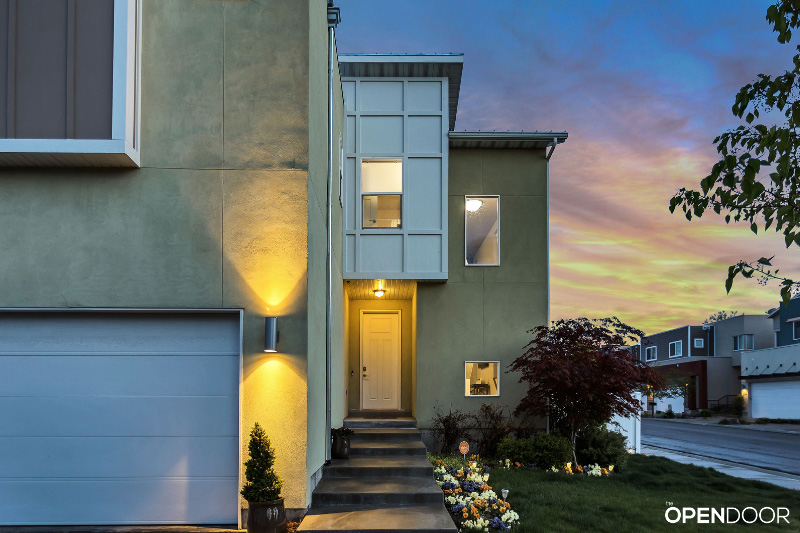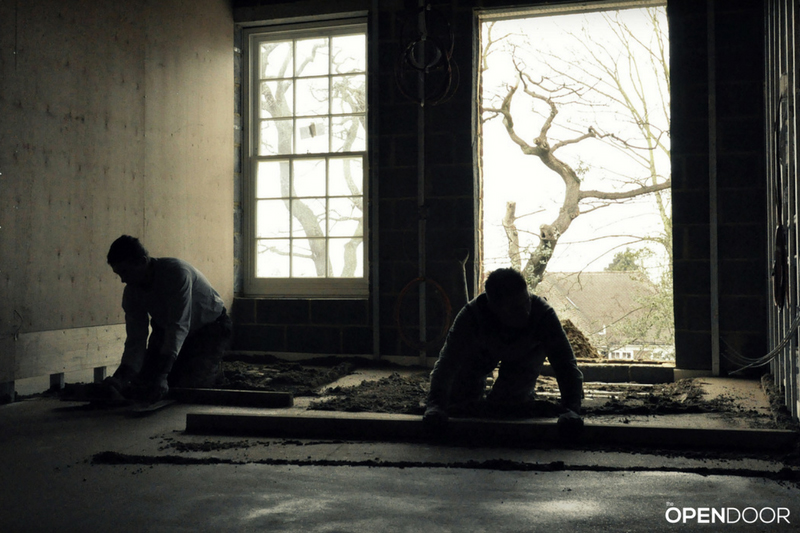You’re in the middle of building your dream home when your contractor tells you that the tile you’ve selected for the bathroom shower is out of stock. It won’t be available for another 4 weeks.
He shows you 2 different tile options that are both available now. One is about the same price as the one you previously selected but doesn’t look as nice. The other one is twice as expensive but you love the look of it.
You have 3 options here:
- Wait 4 weeks and use the tile you originally selected. This would increase the schedule and probably add overhead cost to the project.
- Sacrifice aesthetics and use the tile that doesn’t look as nice but keeps the project on schedule and on budget.
- Use the more expensive and nicer tile that keeps the project on schedule but increases the budget.
Which do you choose?
All home building projects have competing project constraints whether it’s time, cost, quality, risk, resources, or scope.
How do you balance the ever-changing demands of a project when you’re constantly having to make choices that affect all of these constraints?
This article will help you understand how project constraints impact each other and how to identify which factors are most important to you so you can communicate your priorities to your project team and ensure a successful project.
What Are Competing Project Constraints?
In my opinion, there are 3 very critical home building project constraints related to home construction projects with the others being secondary. They are:
- Schedule/time
- Budget/money
- Quality (scope, aesthetic & performance)
Various project management theories exist today addressing these competing constraints. The easiest one to understand is the Project Management Triangle. It’s a visual concept that illustrates how time, money, and quality of a project relate to each other. It is also known as the Iron Triangle, Pick 2, or Triple Constraint.
The best way to interpret it is to think of it like this:
Quality = good. You can get the project done well (good).
Time = fast. You can get the project done fast.
Money = cheap. You can get the project done cheaply.
But you can’t have the project done well, fast, AND cheap.
The Effect of One Constraint On the Others
The idea of competing constraints is that you can’t have your project built well, built fast, AND built cheaply. You have to pick two at the sacrifice of the third.
Here’s what I mean:
You can build your project fast and of good quality, but it will cost more. Better quality materials are expensive and so are more resources/staffing to build faster.
You can build your project fast and cheap, but it will be of poorer quality. Teams may cut corners to get it done faster and/or substitute for cheaper materials.
You can build your project cheap and of good quality, but it will take more time. Your team may use fewer resources/staff to build the project of good quality taking longer.
You can see this relationship in the Venn diagram below.

These competing constraints are most apparent when you’re in the middle of a project and someone introduces new constraints/requirements. Like the scenario at the beginning of the article with the out of stock tile.
Your options were:
- Wait 4 weeks and use the tile you originally selected (Good and cheap but not fast)
- Sacrifice aesthetics and use the tile that doesn’t look as nice (Cheap and fast but not good)
- Use the more expensive and nicer tile (Good and fast but not cheap)
So how do you make decisions like this, especially in the middle of projects when tension and stress are high?
Prioritize Each Project Constraint
Good project management involves understanding where your priorities are.
It’s not possible to say which of these three constraints are the most important one. You and your specific project will influence the constraints and deem which are most important and which your team should focus on.
It’s important to be clear and consistent in explaining what each of the constraints means to you. Defining these constraints is not always black and white. What is “good” and what is “cheap” are examples of terms that can be defined many different ways. They are subjective and can vary from person to person and project to project. What do these terms mean to you and what metrics are you targeting?
Quality – A reduction in scope or quality is never an easy conversation. But scope is often one of the most flexible items if you really get down to it.
In many projects, design features that are not necessary can be altered or substituted and still achieve your project goals. For example, a solid surface countertop can be used in lieu of a discontinued granite. Or a different fixture can be selected for one that was discontinued.
Time – Schedule and time constraints are usually more rigid than quality constraints. You probably have movers scheduled, a temporary housing contract that is set to expire at a certain date, and I’m sure you’ve requested time off work to make the move.
These items are usually more of a nuisance to change and many people try not to budge on them. But, if you do have flexibility in your schedule, it’s sometimes better to let the schedule slide to achieve better quality or to stay on budget with the given materials already selected.
Cost – The budget, in my opinion, is probably the most sensitive aspect of a project. Many people fail to realize exactly how much money is required to build a project, not to mention all the soft costs and unforeseen conditions that eat up the contingency budget. There’s also escalation and market trends that impact projects as well.
It’s all a matter of what your priorities are. Often times a more expensive piece of HVAC equipment performs better and takes up less space. Tradeoffs like these sometimes make it worth the extra money.
You As the Ultimate Decision Maker
As the homeowner and the client, it is ultimately up to you to decide what is most important and then let everyone else know your priorities – because all decisions will be based on these 3 competing elements.
Again, you can optimize for two at the expense of the third, but you can’t maximize all three at once.
The key is to set good project goals at the beginning of the project and let those goals guide all future decisions. And when a decision comes make sure you’re armed with all the information.
Gather all the relevant information.
In the tile example above, I would start by asking for more information to get a rough order of magnitude of the effect.
I would want to know how much more in total dollars the nicer tile would cost to install. I’d also want to know the cost and schedule impact of staying with the current tile given the 4-week delay. Could other work be done in the meantime so that a full 4 weeks is not lost? Maybe it’s just an extra 2 weeks. And what would the cost of extending the schedule be for those 2 weeks?
All this information would impact my decision. If I knew it would only be a few hundred dollars more for the nicer tile, I may go with it. But if it’s much more than that, like $800, I may not. Just because it costs more, may not mean it will break the bank, but without having all the information, I can’t make the best decision.
Every decision isn’t based on prioritizing the same constraint every time.
It’s also worth noting that every decision may not result in prioritizing the same project constraint over the others. You may not always choose to prioritize cost or time over quality. Maybe you may continue to choose that beautiful bathtub with a long delivery date even though you’ve been concerned about the schedule from day one.
It’s your decision. Just make sure you have all the information and evaluate each decision based on your overarching goals and objectives for the project. When a decision isn’t dictated by your goals, weigh the pros and cons and choose what’s most important to you for that specific situation.

Take our online course: Setting Project Goals and Sticking To Them
This online course will help you start your project right and make for decisions down the road.
Here’s what’s included in the course:
- Why Project Goals Are Important
- How to come up with goals
- What are S.M.A.R.T. goals
- How to set S.M.A.R.T. project goals
- The Importance of Putting a Plan in Place to Reach Your Project Goals
- How to Plan to Meet Your Goals
Don’t miss out on this first crucial step in your project journey!
Sign up today to take the course!









